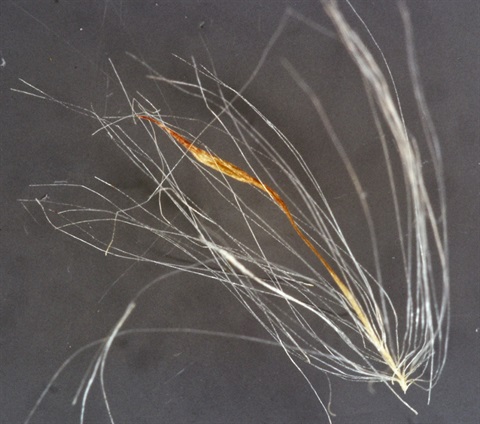
Typha orientalis
Broadleaf Cumbungi
Vigorous erect cane-like perennial herb spreading by underground stems. Terminal spike of male flowers above spike of female flowers on same stem. Plant remains green in winter.
Additional information
- SynonymSeparated from Typha angustifolia
- FamilyTyphaceae
- StoreyMiddle storey
- Size2-4.5 m high x spreading
- Plant groupingAquatic & Semi aquatic
- LeavesBluish to grey-green strap leaves near the base of stem, to 2 m x 6-20 mm, leaf sheath at base of leaves, top 2-4 with ear-shaped lobes. Leaves bi-convex in cross section.
- Flower colourChestnut-brown
- Flowering timeDecember to May
- FlowersDense cylindrical spikes, male and female 0-3.5 cm apart. Female flowers have few or no narrowly spoon-shaped bracts, stigma narrowly oval, often folded, length of spike 7-30 cm x 5-20 mm wide.
- Bird attractingHabitat - nesting and/or safety
- Butterfly attractingNo
- Frog habitatYes
- Growing conditionsSemi-aquatic to aquatic, up to 1 m deep along edges of waterways and swamps. Full sun, semi-shade.
- Garden useVery vigorous in wet areas, not tolerating drying out. Can be difficult to control unless roots are restricted.
- Commercially availableNo information available
- Conservation statusLocally common within its preferred growing conditions
- Aboriginal Use Food - young shoots (raw), root (steamed, roasted); leaf - string (fibre), weaving
- Related speciesVery similar to Typha domingensis, often growing together. Refer to sheet for specific differences - include distance between male & female spikes, size of female spike, bracts, stigma, sheaths. Typha latifolia - introduced species, dies down in winter. Female spike dark red-brown to black-brown, bracts absent, stigmas broad at tip, flat and fleshy; leaves almost flat in cross section.
Photo Gallery
Photographer/s: 1, 2, 4 Marilyn Bull ©; 3 Peter Kinchington ©
Plant Communities